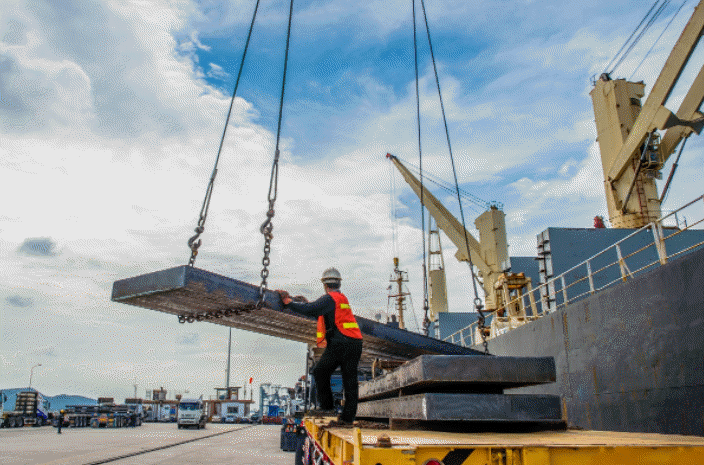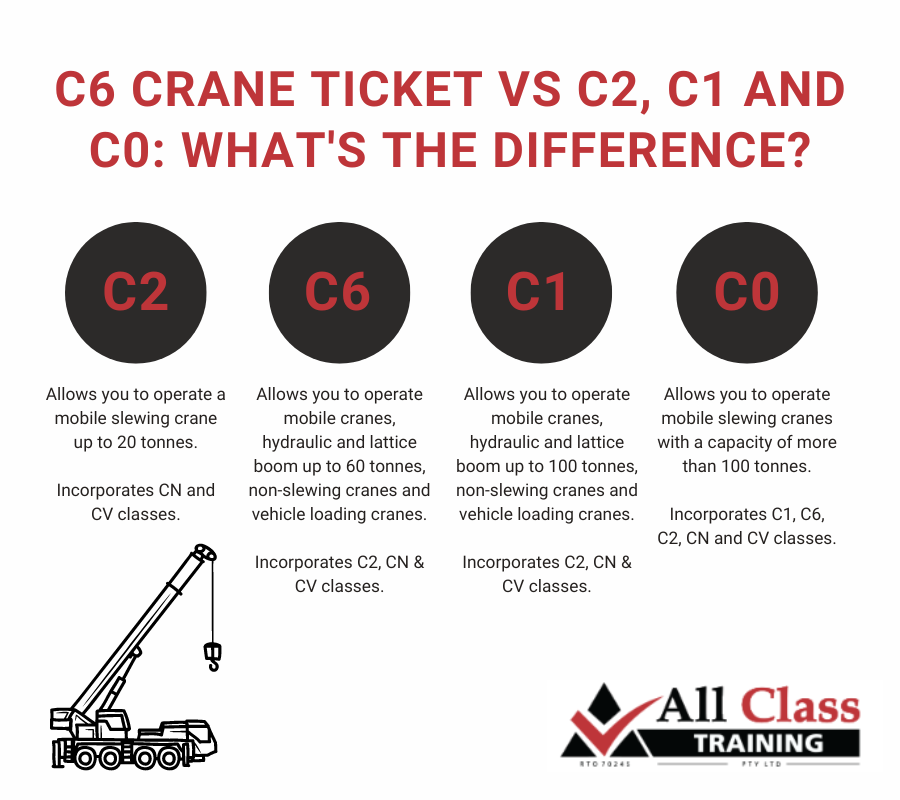Phone (02) 4964 9406
Mobile 0405 758 535
Email training@allclass.net.au
Address 10 Kilcoy Drive, Tomago NSW 2322

New to the industry and looking to get your crane ticket? You might be wondering what all the different jargon means e.g. “C6 crane tickets” versus “C1 crane tickets” and so on. Starting out in the industry, it’s important to understand what the different jargon means so you can also understand what licencing and training are required to work safely in your new role.
At All Class Training, we offer C6 crane tickets and training that also incorporates CV, CN and C2 — but what does it all mean? In this article, we shed some light on the different jargon and tickets you will come across in your career so you can feel more prepared and confident for the training ahead.
C2, C6, C1 and C0 crane tickets are all slewing mobile cranes i.e. cranes that incorporate a boom jib that is also capable of being slewed. It is important to note that this excludes front end loaders, backhoes, excavators and other earthmoving equipment when it is configured for crane operation.
If a slewing telehandler is fitted with a boom and/or jib with a hoist rope and/or hook block, a C2, C6, C1 or C0 high-risk work licence is required (depending on the telehandler’s capacity).
A C2 licence allows you to operate a mobile slewing crane up to 20 tonnes. This also incorporates CN and CV classes (more on this later).
A C6 crane ticket allows you to operate any mobile cranes, hydraulic and lattice boom up to 60 tonnes, any non-slewing cranes (like telehandlers or Franna cranes) and vehicle loading cranes. This ticket incorporates C2, CN and CV classes.
A C1 crane ticket allows you to operate a slewing crane up to 100 tonnes. This incorporates C6, C2, CN and CV classes.
A C0 crane ticket allows you to operate slewing mobile cranes with a capacity of more than 100 tonnes. This incorporates most other classes including C1, C6, C2, CN and CV classes.
As you complete more training, you may notice other acronyms like CB, CD, CP and so on. These acronyms represent different kinds of cranes that you need to complete work — your manager will outline which cranes you will be using and what kind of training you need to progress in your role.
Below is a general definition of each of the different acronyms and cranes you will come across in your career.
At All Class Training, we offer C6 tickets and training to ensure you have the skills, knowledge and experience to safely operate a mobile slewing crane. Our course involves both practical and theoretical components as well as an assessment at the end of the three-day course to determine if you are eligible for a licence.
To complete a C6 ticket with All Class Training, you must meet the following requirements:
Once you have passed the final assessment, we will provide the application forms you need for a new high-risk work licence. You will need to take these forms to your local Australia Post office within 60 days of the successful assessment date (as well as 100 points of ID and a passport-sized photo of yourself with your name and date of birth written on the back).
You will also be required to pay a licence fee to SafeWork NSW.
All Class Training has a notable 99% pass rate for our students — we’re confident that we can provide the quality training you need to progress in your career. View our upcoming course dates on our C6 ticket page and get in touch to book your training today.
We offer both individual and group training sessions to ensure your entire team can operate a mobile slewing crane safely and effectively.